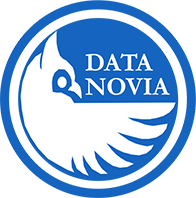Introduction
Mutagen is a powerful tool that facilitates real-time, bidirectional file synchronization between your host and container environments. In this guide, we will walk you through the installation process—focusing primarily on macOS—and cover the basic configuration steps required to get started.
1. Install Mutagen
Installing on macOS with Homebrew
The simplest way to install Mutagen on macOS is using Homebrew. Open your Terminal and run the following command:
brew install mutagen-io/mutagen/mutagenThis command downloads and installs the latest Mutagen release directly from the official repository.
Installing on Other Platforms
- Linux:
Visit Mutagen’s official documentation to download the precompiled binaries or build from source. - Windows:
Refer to the official Mutagen installation guide for Windows-specific instructions, as the installation process differs from macOS.
2. Verify the Installation
After installing Mutagen, confirm that the installation was successful by running:
mutagen versionYou should see output similar to:
Mutagen version 0.18.1If the command is not recognized, ensure that your system’s PATH includes the directory where Homebrew installs binaries.
3. Start the Mutagen Daemon
Mutagen runs a background daemon to manage synchronization tasks. Although Mutagen often starts the daemon automatically, it’s a good idea to verify that it’s running:
mutagen daemon startThis ensures that all subsequent sync operations are handled efficiently.
4. Basic Configuration and Sync Session Setup
Understanding Sync Sessions
Mutagen uses sync sessions to manage file synchronization between two endpoints. When creating a session, you can specify:
- Session Name: Use the
--nameflag to assign a unique identifier. - Ignore Patterns: Exclude specific files or directories (e.g.,
--ignore 'unwanted-folder/**') to improve performance. - Sync Modes: Select between bidirectional and one-way sync depending on your needs.
Example: Creating a Sync Session
After verifying your installation, you can create your first sync session. For example, to synchronize your local folder with a Docker container while excluding the unwanted-folder directory, run:
mutagen sync create --name my-sync-session \
--ignore "unwanted-folder/**" \
/path/to/local/folder docker://your-container-name/path/in/containerReplace /path/to/local/folder with your actual local directory and your-container-name/path/in/container with the target container’s name and directory path.
5. Additional Configuration: Choosing Your Docker Connection
There are two main approaches to connecting Mutagen with Docker:
Option A. Direct Docker Container Sync
This approach creates a sync session directly between a local directory and a running Docker container, as shown in the example above.
Option B. Docker Compose Integration
For those using Docker Compose, you can integrate Mutagen via the Mutagen Compose plugin. This allows you to define synchronization sessions in your docker-compose.yml file. For detailed setup, refer to our Using Mutagen with Docker and Devcontainers tutorial.
6. Managing Sync Sessions
Mutagen provides several commands to manage your sync sessions:
List Active Sessions:
mutagen sync listPause a Session:
mutagen sync pause my-sync-sessionResume a Session:
mutagen sync resume my-sync-sessionTerminate a Session:
mutagen sync terminate my-sync-session
7. Tips and Considerations
- Performance Optimization:
Mutagen only transfers the changed portions of files, making it faster than repeatedly copying entire directories. - Conflict Handling:
In bidirectional sync, be mindful of how conflicts are resolved. Mutagen provides options to merge changes or notify you of conflicts. - Excluding Files:
Use ignore patterns to exclude unnecessary files (e.g., build artifacts) from synchronization. - Secure Synchronization:
Mutagen supports encrypted connections for secure synchronization, which is particularly useful when syncing over networks.
Conclusion
With Mutagen installed, the daemon running, and a sync session configured, you’re now ready to experience fast, reliable file synchronization in your containerized development environment. This setup helps overcome performance limitations and permission issues typically encountered with traditional bind mounts.
Further Reading
Explore More Articles
Here are more articles from the same category to help you dive deeper into the topic.
Reuse
Citation
@online{kassambara2025,
author = {Kassambara, Alboukadel},
title = {Installing and {Configuring} {Mutagen:} {A} {Step-by-Step}
{Guide}},
date = {2025-03-09},
url = {https://www.datanovia.com/learn/tools/mutagen/installation.html},
langid = {en}
}
